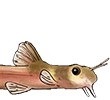Regular water changes, big water changes, little water changes... didn't do the trick. Leaving the same water in there for three weeks did! I found about 15 eggs yesterday evening, as I had noticed increasing pre spawning behaviour (males regularly chasing fatter females, increased leaf/glass cleaning). These were mainly deposited around the periphery of the tank, in the Java moss and anubias very close to the glass, as well as a few on the glass itself. Some of the eggs have already started colouring up (brown, not white cloudy
Any tips on raising them? I've never spawned these guys before, though have had success with C. pygmaeus, and all the usual easier species. I'm assuming they'll be very similar to the pygmaeus. Also, thoughts on keeping shrimps and eggs together? The cherry's don't appear to be touching the eggs yet, but has anyone got any first hand experience here? From what I have read, it is an oft disputed question, but the shrimps do a great job in the clean up crew.
Thanks




